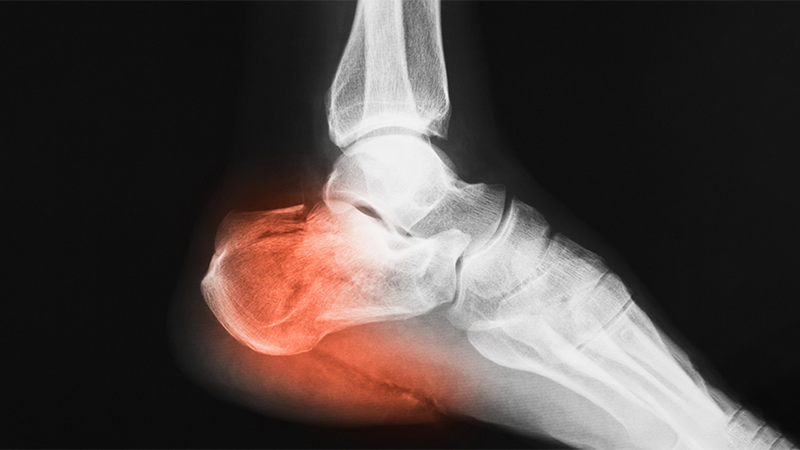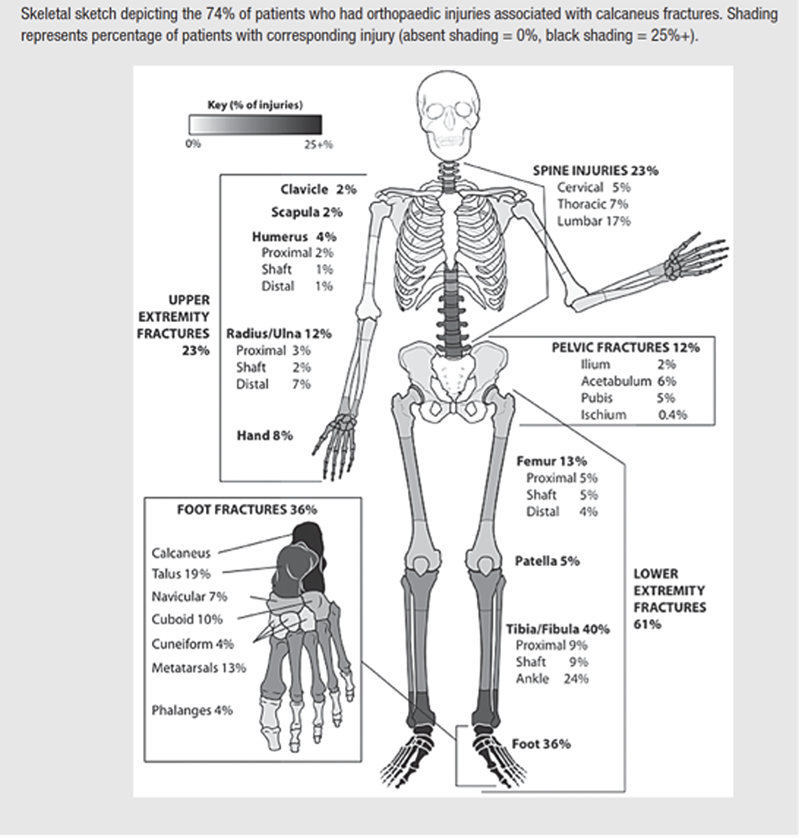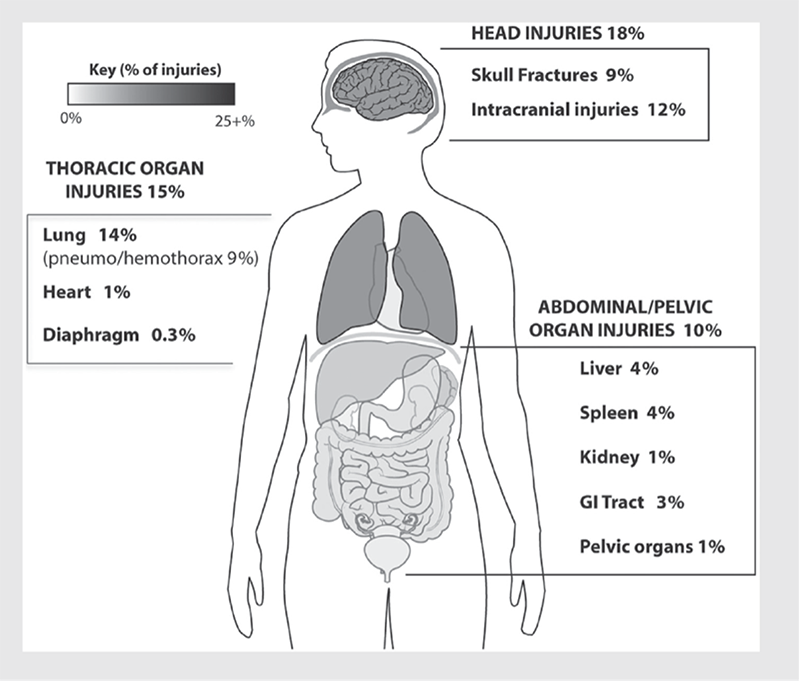
Practice Perfect 796
More About Calcaneal Fractures
More About Calcaneal Fractures

Last weeks’ Practice Perfect, about Mondor’s sign in foot injuries, stoked my interest for even more fun with calcaneal fractures. I like to listen to the questions my residents ask students, and a common one when discussing heel fractures is, “What spinal level is most likely fractured during calcaneal fractures?” Do you know the answer? Let’s explore this subject a little and see where it leads us.
First, to keep the discussion a little constrained, we’ll limit this to injuries associated with joint depression calcaneal fractures, most commonly involving axial load mechanisms. There are so many other ways a heel bone can fracture that this editorial could last forever. Scary thought, I know!
Walters, et al.1 performed a retrospective examination of 208 consecutive patients who sustained calcaneal fractures. These researchers looked at the demographics of patients in this cohort that also sustained vertebral fractures and found 15 of these calcaneal fractures (7.1%) to have concomitant vertebral fractures. Of these fractures, 80% (or 12 fractures) were at the lumbar level, and this was the only statistically significant relationship. The other three vertebral fractures were in the thoracic spine (one injury actually included both the thoracic and lumbar levels). This study did not narrow the injury to a specific lumbar vertebra.
A slightly more recent study with a much larger database was published in 2017. Bohl and colleagues examined a database of 14,516 patients with calcaneal fractures, reporting various factors associated with those fractures.2 Interestingly, of those studied, 11,224 (77%) had other injuries, 74% of which were orthopedic and 29% non-orthopedic. Since we are concerned with associated spinal injuries, let’s now focus on that aspect of the study. They found 23% of those with concomitant injuries had spinal injuries and 17% involved specifically the lumbar spine. I found their summary image describing the epidemiology of orthopedic-related injuries to be highly informative (see Figure 1).

Now, since the idea of associated injuries with calcaneal fractures is so important, I can’t help but talk a little about the soft tissue injuries they found in this study (see Figure 2 for another good image). The key takeaway from examining this data is the relatively high risk of concurrent bone and soft tissue injuries in patients with calcaneal fractures. In this population, they found 92% of patients have injuries due to traffic accidents or falls. It then makes sense that there would be so many other possible associated injuries.

Because this study used ICD-9 diagnosis codes to gather data, it was not able to report specific vertebral injuries beside the region of the spine involved.
My personal take-away from these studies is that there is a relatively high rate of associated injuries in patients with calcaneal fractures, both bone and soft tissue. As such, we always need to maintain a high index of suspicion for many other potential injuries in these patients. The events surrounding the fracture itself should, as noted by the epidemiology of those associated injuries, guide our investigations. As in everything, a thorough history and physical is paramount. Although we know that axial loads are more likely to lead to joint depression calcaneal fractures, we cannot assume that all axial loads are the same. For example, a patient who falls from a height of six feet is less likely to have multiple abdominopelvic injuries than someone in a high speed motor vehicle accident.
To wrap up this discussion, let’s return to that question my residents asked students about which spinal level is most likely involved. A common answer given is that L1 (first lumbar) vertebral fractures are most common. Unfortunately, I have not been able to find a legitimate published source that confirms this statement. The best we can say is the lumbar region is most commonly involved with calcaneal fractures. Despite that, keeping a high index of suspicion for other injuries anywhere is important, and a general trauma survey is always in our patients’ best interests.
Best wishes.

Jarrod Shapiro, DPM
PRESENT Practice Perfect Editor
[email protected]

-
Walters JL, Gangopadhyay P, Malay DS. Association of calcaneal and spinal fractures. J Foot Ankle Surg. May-Jun 2014;53(3):279-281.
Follow this link -
Bohl DD, Ondeck NT, Samuel AM, Diaz-Collado PJ, Nelson SJ, Basques BA, Leslie MP, Grauer JN. Demographics, Mechanisms of Injury, and Concurrent Injuries Associated With Calcaneus Fractures: A Study of 14,516 Patients in the American College of Surgeons National Trauma Data Bank. Foot Ankle Spec. 2017 Oct;10(5):402-410.
Follow this link






























Comments
There are 0 comments for this article